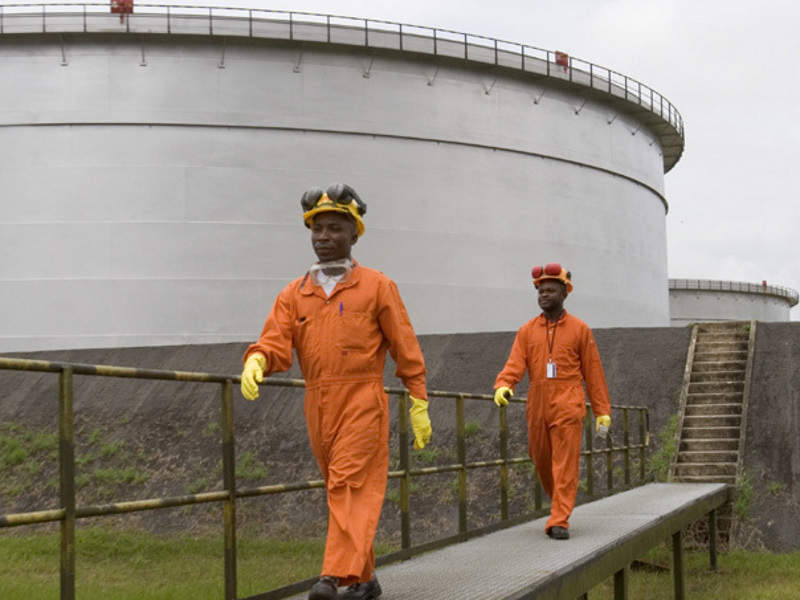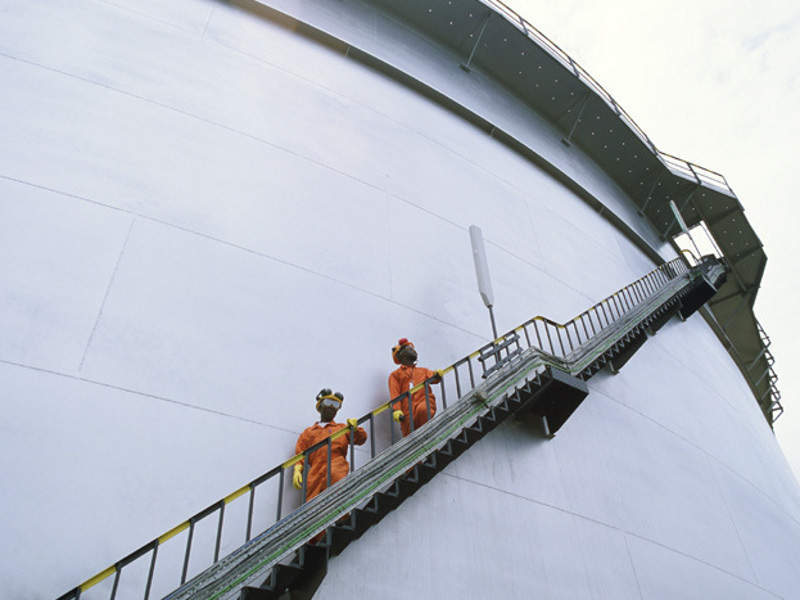Nigeria LNG facility at Bonny Island, Nigeria, is undergoing expansion to add seventh LNG processing unit and supporting infrastructure to increase its total production capacity from 22 million tonnes per annum (Mtpa) to 30Mtpa.
Brought on-stream in 1999, the LNG facility is owned and operated by Nigeria LNG (NLNG), a joint venture between Nigerian National Petroleum Corporation (NNPC, 49%), Shell Gas (25.6%), Total (15%) and Eni (10.4%).
NLNG made a final investment decision (FID) on the expansion project in December 2019 and the seventh liquefaction unit at the site is expected to come on stream in 2024.
Nigeria LNG expansion details
Estimated to cost £4.9bn ($6.5bn), the train seven at the Bonny Island LNG facility will include a new liquefaction unit, an 84,200m³ storage tank, a 36,000m³ condensate tank and three gas turbine generators.
Project Gallery
-

The addition of seventh train will increase Nigeria LNG’s production capacity to 30Mtpa. Image courtesy of Shell.
-

Nigeria LNG facility at Bonny Island, Nigeria, has been operational since 1999. Image courtesy of Chike Roland Oraekwugha.
-

Nigeria LNG is jointly owned by Nigerian National Petroleum Corporation (49%), Shell Gas (25.6%), Total (15%) and Eni (10.4%). Image courtesy of Shell.
-

Bonny Island LNG facility has been constantly expanded since its commissioning in 1999. Image courtesy of Shell.
The new liquefaction unit will add approximately 4.2Mtpa capacity. The expansion project will also include debottlenecking of the existing six trains that increases the processing capacity by 3.4Mtpa.
An additional £3.8bn ($5bn) will be required to build wells and pipelines to supply additional feed gas to the LNG facility.
Nigeria LNG facility development history
NLNG was incorporated in 1989 and the FID to build an LNG plant with two trains on a 2.27km² (227ha) site in Finima, Bonny Island, was taken in November 1995.
A £745m ($1.2bn) engineering, procurement and construction (EPC) contract was awarded to TSKJ, a consortium of four engineering companies including Technip, Snamprogetti (now Saipem), M.W. Kellogg (now KBR) and Japan Gas Corporation (JGC), in the same year.
Construction on the plant started in February 1996 and the first two LNG trains were commissioned in 1999 and 2000 respectively.
The FID to build train three and a natural gas liquids (NGLs) handling unit was taken in February 1999 and TSKJ was awarded the EPC contract. The train three was brought into operation in November 2002.
The construction of trains four and five started as part of LNGplus project after the FID on the same was taken in March 2002. A £1.2bn ($1.7bn) EPC contract was awarded to TSKJ consortium in the same year and the two trains came on stream in 2005 and 2006 respectively.
The FID on NLNGSix project was taken in July 2018, to add train six and additional condensate processing and LPG storage facilities.
The EPC contract for the train was awarded to TSKJ, while the building contract for additional storage facilities was awarded to Entrepose Contracting (EC), a contractor company based in France.
Train six of the Nigeria LNG facility became operational in December 2007.
Infrastructure facilities at the existing Nigeria LNG plant
With six operational LNG processing units, Nigeria LNG facility has the capacity to produce 22Mtpa of LNG and 5Mtpa of liquefied petroleum gas (LPG) and condensate.
Trains one, two and three have the capacity to produce 3.33Mtpa of LNG each, while trains four, five and six can produce 4Mtpa of LNG each.
Other facilities at the terminal include four 84,200m³ LNG storage tanks, four 65,000m³ refrigerated storage tanks, three 36,000m³ condensate storage tanks, a common LNG processing fractionation plant, a common condensate stabilisation plant, and ten gas turbine generators with a combined capacity of more than 320MW.
Further, the facility has two LNG export jetties, 23 dedicated LNG ships and a materials off-loading jetty.
Contractors involved with Nigeria LNG expansion project
NLNG awarded the FEED contract for the train seven to two consortia of engineering companies, namely B7 JV Consortium and SCD JV Consortium, in July 2018.
The B7 JV Consortium comprises KBR, Technip and Japan Gas Corporation (JGC), while the SCD JV Consortium includes Italy’s Saipem, Chiyoda of Japan and South Korea’s Daewoo Engineering & Construction.
NLNG issued a letter of intent to SCD JV for the engineering, procurement and construction (EPC) works for the expansion project in September 2019.
Feed gas supply for Bonny Island LNG operation
The total natural gas requirement of the operational LNG facility is 3.5 billion cubic feet (bcf) per day.
The facility receives feed gas under long-term gas supply agreements with three joint ventures that include Shell Petroleum Development Company of Nigeria (SPDC), Total Exploration and Production Nigeria (TEPNG) and Nigerian Agip Oil Company (NAOC).
The feed gas for the LNG terminal is produced at various offshore and onshore fields in the Niger Delta and supplied through four onshore and two offshore pipeline systems.
SPDC, TEPNG and NAOC also signed a 20-year agreement with NLNG to supply feed gas to the upcoming seventh processing unit in December 2019.
LNG sales from Bonny Island
The LNG produced at the Bonny Island facility is sold under 16 separate long-term LNG sales purchase agreements (SPAs) to 11 customers including Enel, Gas Natural, Botas, GDF Suez, GALP Gas Natural, BG LNG, Endesa, ENI, Iberdrola, Shell Western LNG, and Total Gas and Power.
The LPG produced at the facility is sold in the domestic market under SPAs with 15 Nigerian companies.
